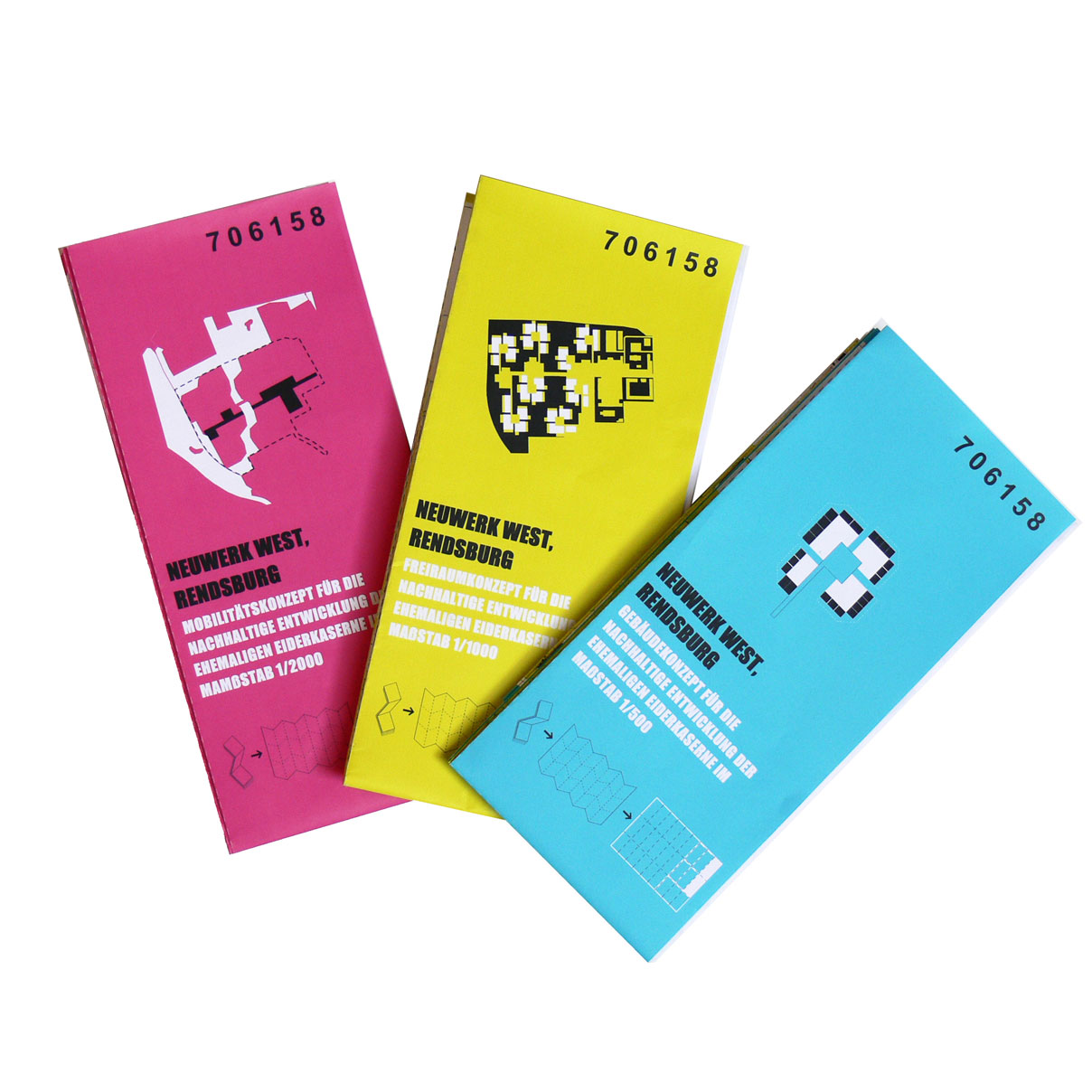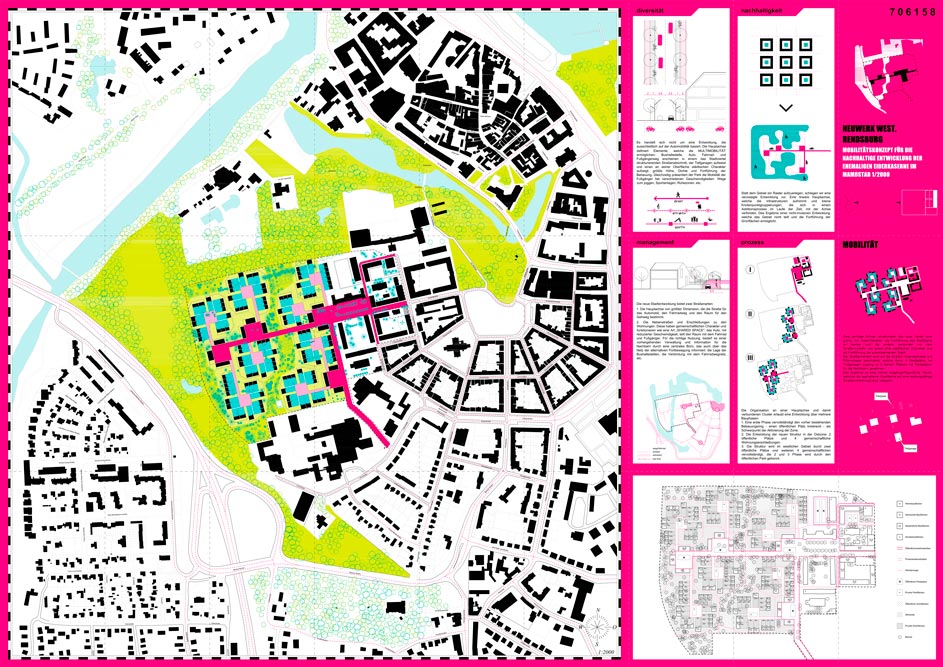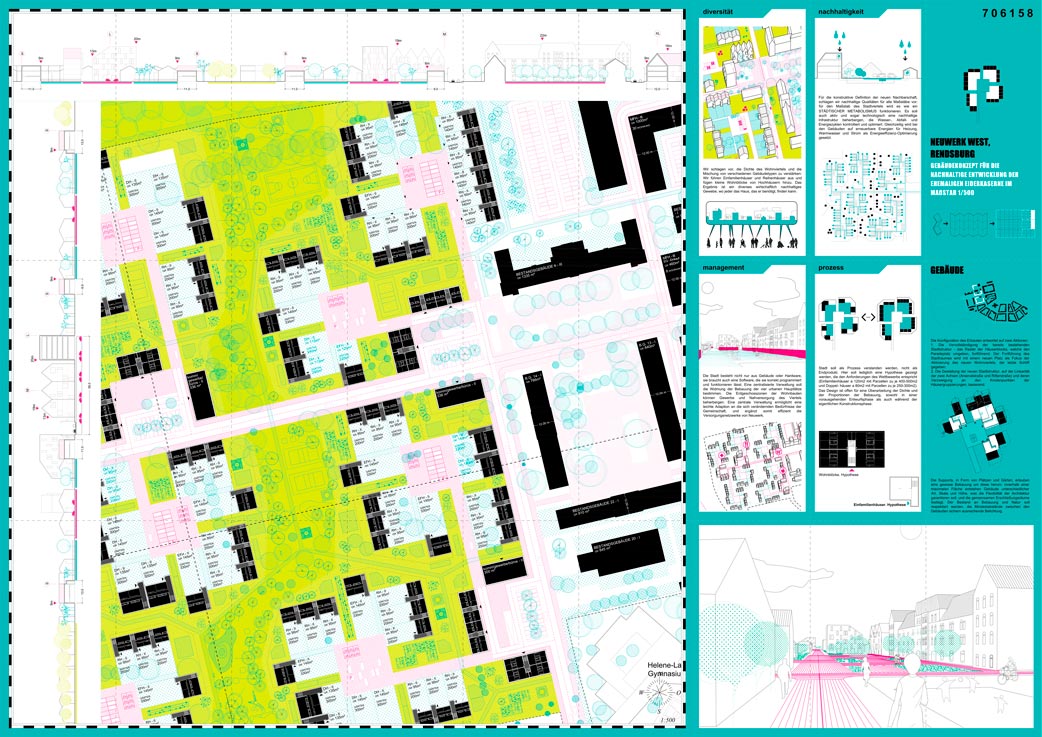NEUWERK WEST, RENDSBURG
Competition for urban development in the former barracks area Eiderkaserne
Rendsburg, Alemania, 2014
Asociated with land lab, landscape laboratory (Miriam García)
FINALIST
The competition was based on an area where the former military barracks of Eiderkaserne were placed, to propose an urban development of primarily residential character.
In response to the statement, we elaborated three folding maps which deal with the three main topics for this development: mobility, free space and building. Each of these maps is associated to a scale and an identifying color, but all of them respond to key issues such as diversity management, sustainability and process.
The mobility of the new area generates two axes that respond to different needs.
In one hand, the red axis solves car mobility, connecting to an existing square, which is strengthed and from which our proposal will be developed in phases, generating a central urban plaza. This urbanity extends along said axis, where we find mixed uses in larger scale buildings.
In the other hand, the large green axis work as a public park since the ‘zero’ phase and provides alternative mobilities such as bike and pedestrian, besides connecting the existing masses of vegetation, putting them into our intervention.
Because the mobility of the car is linked to the central axis and small squares of access, a predominantly pedestrian development of the district can be guaranteed, colonizing the free space through the common green: the ‘Allmende’.
This ‘Allmende’ is a central-managed continuous space, re-programmable in time and with capacity of appropriation, which by its green nature ensures the porosity of the new fabric, as well as low footprint and low cost maintenance.
But there is another kind of green, the private green, which are the gardens that give access to small-scale housing (S). The private garden is support of this building, and around it you can build some buildability.
The buildings of larger scale (M, L) take as support the squares that connect to the central red axis. These squares concentrate community / urban uses, as well as both underground parking for residents and surface parking for users.
Finally, we connect with the city through some XL size blocks, which take existing heights and typology we find in the urban center, and continue the residential ring surrounding the city center until closing it.
>Authors:
Enrique Arenas Laorga, architect
Luis Basabe Montalvo, architect
Luis Palacios Labrador, architect
Miriam García García, landscape architect
Collaboration:
. laura salvador gonzález, architecture student
. catherine folawiyo, architecture student
. paula fernández san marcos, architect








